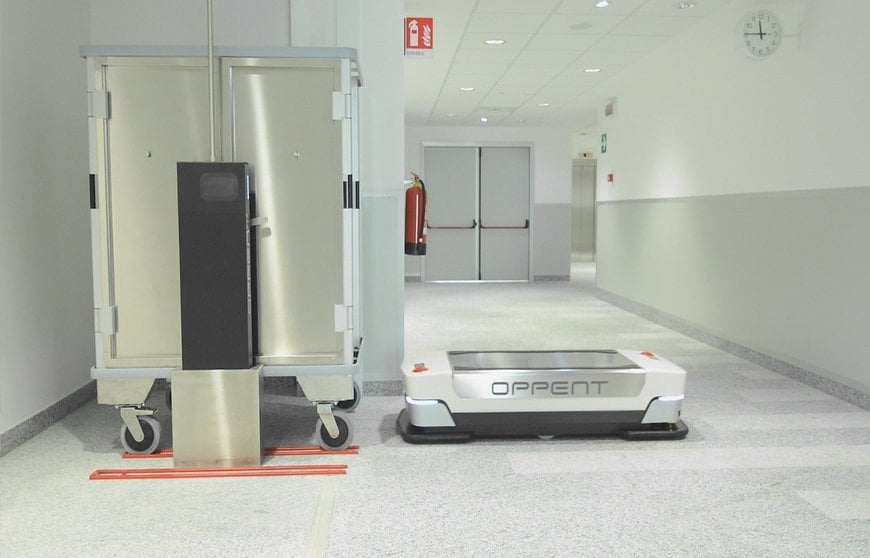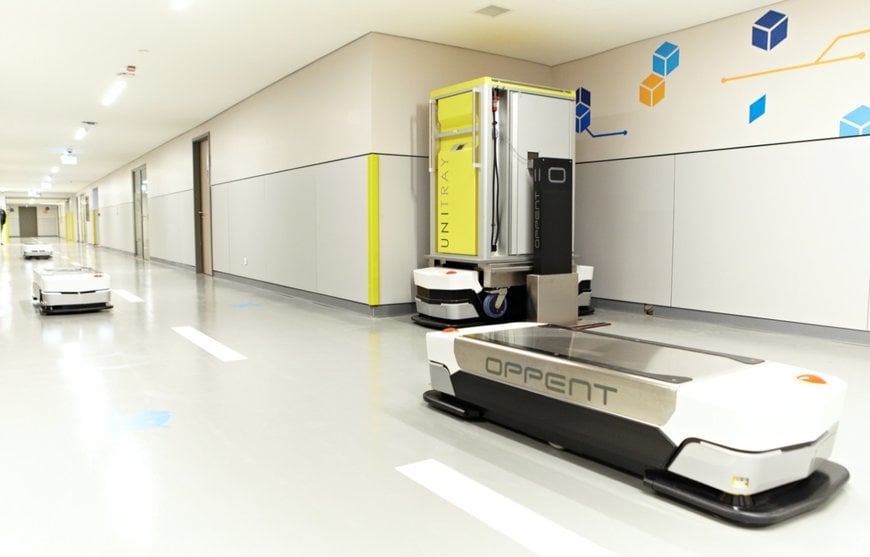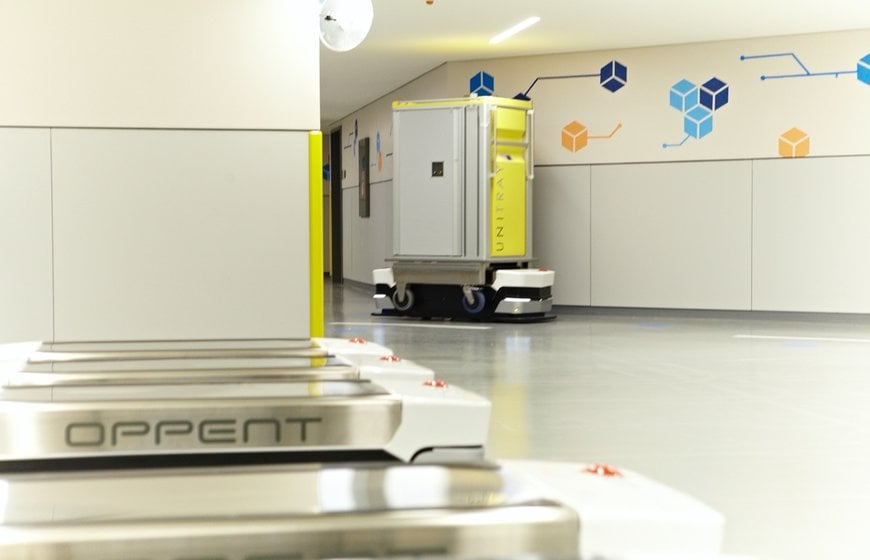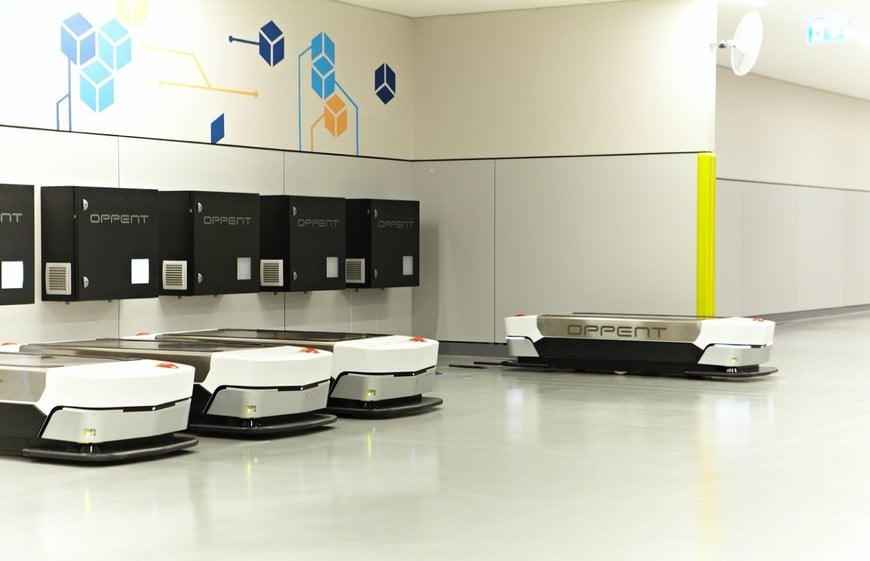www.industryemea.com
07
'20
Written on Modified on
AGVs keep the PPE moving during the COVID-19 pandemic
The COVID-19 crisis has focussed public attention on the role that hospitals and healthcare professionals play in treating those infected by the virus.

Working within strict social distancing guidelines and limited staff has strained the resources of some of the support staff including internal logistics suppliers.
This is why an increasing number of hospitals around the world are reaping the benefits of investment in automated guided vehicles (AGVs).
A modern hospital or clinic handles a huge amount of internal transportation daily. A 200-bed hospital transports an average of six tons of materials per day over a total distance of about 60 km, while an 800-bed hospital can handle up to 27 tons of materials, covering a distance of about 800 km. By utilising an AGV logistics system these movements can be handled more efficiently, freeing up valuable resources for medical activities.

One hospital in Garbagnate Milanese, Italy, for example, employs AGVs to automate these processes. The 57,000 m2 facility has over 500 beds and the backend logistics are handled by 12 AGVs that transport goods to 147 reception stations throughout the hospital.
The quality of transport in healthcare is essential, in order to safeguard the integrity of the materials carried, ensuring a high level of hygiene and assuring the health of patients. One company that has been supporting healthcare facilities automate their logistics since 2012 is Italy-based Oppent, with its EvoCart series of mobile robots, specifically developed for hospitals and medical centres. These vehicles can handle food, laundry, waste, sterilisation, pharmacy, and general supplies, including ensuring that vital personal protection equipment (PPE) is in the right places at the right time during the current pandemic. Oppent has managed handling in more than 20 healthcare facilities.

Oppent’s bi-directional mobile robots have a programmable speed of 0.10 m/s to 2.0 m/s and respect the safety regulations ISO 3691-4. Their movements are controlled by Autonomous Navigation Technology (ANT®), by BlueBotics, which uses natural structures in the environment—such as walls or furniture—as references, to ensure each vehicle knows where exactly it is. This approach means an AGV installation does not require expensive infrastructure changes, such as inductive wires being laid in the floor, or triangulation reflectors on the walls, in order to navigate effectively.

The AGVs are quickly installed with ANT® lab tool suite and modifications to routes are even simpler. As a result, installations are simple and economical to set up and maintain, whether a single automated guided vehicle or a large fleet. A specific built-in safety system using specific certified laser scanners can identify any obstacles along the path and adjust the movement of the vehicle, with the AGVs autonomously handling obstacles either by adapting their speed to avoid emergency situations (path following) or moving around them (obstacle avoidance).
www.bluebotics.com

